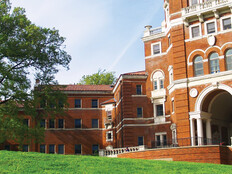3 Perks of Network Management on a University Campus
Network management, facilitated by tools such as firewalls and intrusion prevention systems, can go a long way toward making sure a university IT team is providing the bandwidth and performance that students and staff need.
When IT staffs closely monitor networks and deploy management technology, they can find efficiencies and reap benefits in security and performance.
Here are three perks of network management on college campuses:
SIGN UP: Get more news from the EdTech newsletter in your inbox every two weeks!
1. Deploying Management Tech Increases Visibility, Security
Without even some baseline network monitoring, universities have no way of knowing when a bad actor might be trying to get into data.
After a major data breach, Arkansas State University introduced a new Palo Alto Networks next-generation firewall to boost visibility and ease management, EdTech reports. The new firewall not only added automation to help detect network intrusions, but it also provided IT staff with real-time insight and control over who and what is traveling within the network.
“We are able to be much more dynamic in our ability to look at users and applications and determine who within an active directory group is allowed to use a certain port,” says Timothy Cureton, the chief information security officer at Arkansas State University, in the EdTech article.
Researchers at Carnegie Mellon University’s CyLab Security and Privacy Institute also tell EdTech that data visualization tools and virtual reality platforms can assist university IT teams with seeing any changes in network traffic.
Rather than going through each piece of data in a spreadsheet, the CyLab researchers say visualization tools can assist network administrators with spotting a huge spike or change in traffic, which could be related to a cyberattack.
2. Tracking Virtual Machines Boosts Performance
By closely monitoring networks, higher ed IT staffs can also quickly identify so-called ghost servers, or virtual machines that serve no purpose, but still continue to drain power, processing, memory and disk space.
IT staff can use firewall logs or dedicated sensors to see which servers aren’t receiving incoming traffic and therefore are likely no longer in use, writes Joel Snyder, a senior IT consultant, on EdTech.
3. Monitoring Lets IT Staff Keep Up with Bandwidth Needs
While universities are doing a pretty good job of meeting the increasing bandwidth needs of students, monitoring networks helps IT staff make sure that everyone is getting the connectivity they need, in the places they need.
The University of California, Santa Cruz, for example, discloses to students and staff that network administrators monitor traffic constantly to make sure that campus locations have enough bandwidth.
Colleges that use solutions such as software-defined wide area networks (SD-WANs) are also able to monitor their networks more efficiently and optimize bandwidth where it is needed, so performance is at its peak.









